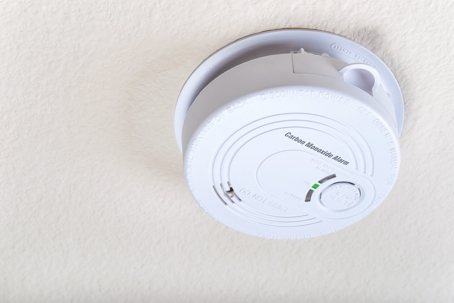Have you ever seen in a movie or even heard a real life story of someone passing away due to carbon monoxide poisoning? You might be wondering to yourself, “What is carbon monoxide?” or “How dangerous is carbon monoxide?”. Well, according to the CDC, approximately 500,000 people in the U.S. visit the emergency room each year due to accidental carbon monoxide poisoning and at least 430 people die from it.
It’s an invisible but deadly gas that not enough people know about.
What is carbon monoxide?
To better understand the dangers of carbon monoxide, you should know what carbon monoxide poisoning actually is. Carbon monoxide is present in the lower levels of the air and it results from the incomplete combustion of fossil fuels. It is a tasteless, odorless invisible gas that is made up of one carbon atom and one oxygen atom. It causes damage by fastening itself with your red blood cells and proceeds to starve your body of oxygen after getting into your lungs.
What is the difference between a carbon monoxide detector and a regular smoke detector?
Carbon monoxide detectors work just like smoke detectors, instead they you of carbon monoxide in the air of your home. Smoke detectors, as many may know, alert you of smoke from a fire. Smoke detectors work by detecting an infrared beam being disrupted by smoke. When a stream of smoke breaks through the beam, an alarm is sounded alerting a fire. Carbon monoxide detectors sound an alarm when the electrochemical sensor senses changes in electrical currents.
Where should CO2 detectors be placed in my home?
Carbon monoxide detectors should be placed on every floor of your home. The smartest place would be to put it outside of your bedroom doors so you are able to hear the alarm if it might ever go off. It is also recommended that you place the detectors 5-20 feet from some of the most common sources of carbon monoxide that are in your home. CO2 can come from things in your home like household appliances such as water heaters, gas fires, boilers and central heating systems. The detectors should be placed on the ceiling or 5 feet above the floor.
What if my carbon monoxide alarm sounds?
There’s an alarm for a reason, don’t ignore it! Also known as “The Silent Killer,” carbon monoxide poisoning is considered the leading cause of poisoning deaths in the U.S. When the alarm goes off, act quickly by getting everyone in the house and into fresh air followed by making sure that everyone feels okay. If everyone is feeling good, continue by ventilating the building and finding the source. If some are experiencing symptoms, call 911.
Just because you have a carbon monoxide detector installed doesn’t mean you’re completely safe from potential poisoning. The average lifespan of a detector is about 2 years, so make sure to regularly test it to make sure it is still functioning correctly. Let us help you make your home safe from carbon monoxide poisoning.
Contact us for more information about our services and products or if you have more questions about carbon monoxide poisoning!

